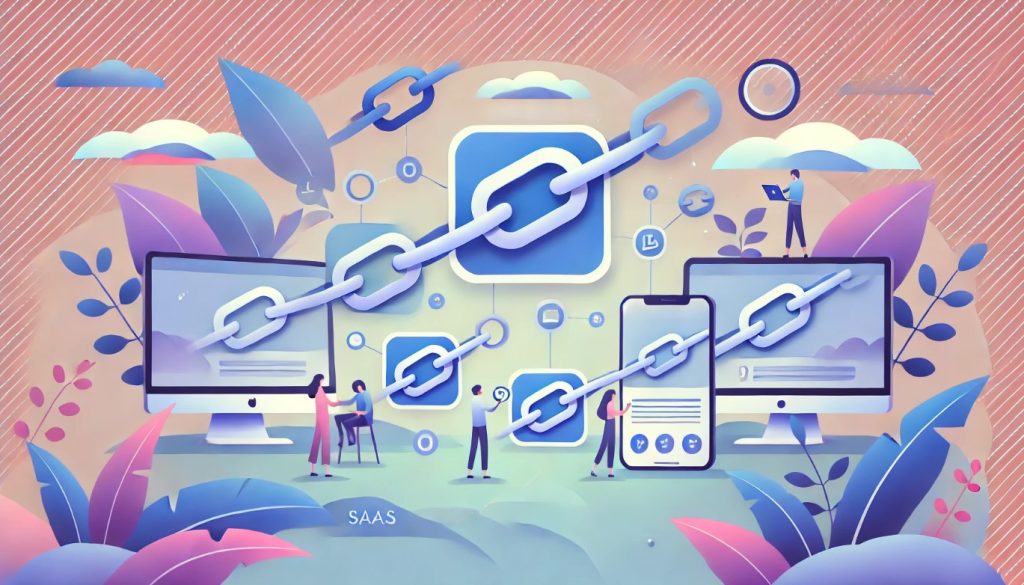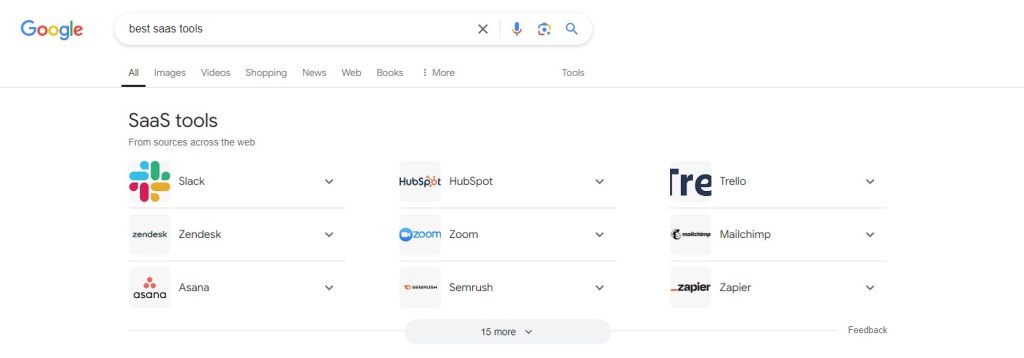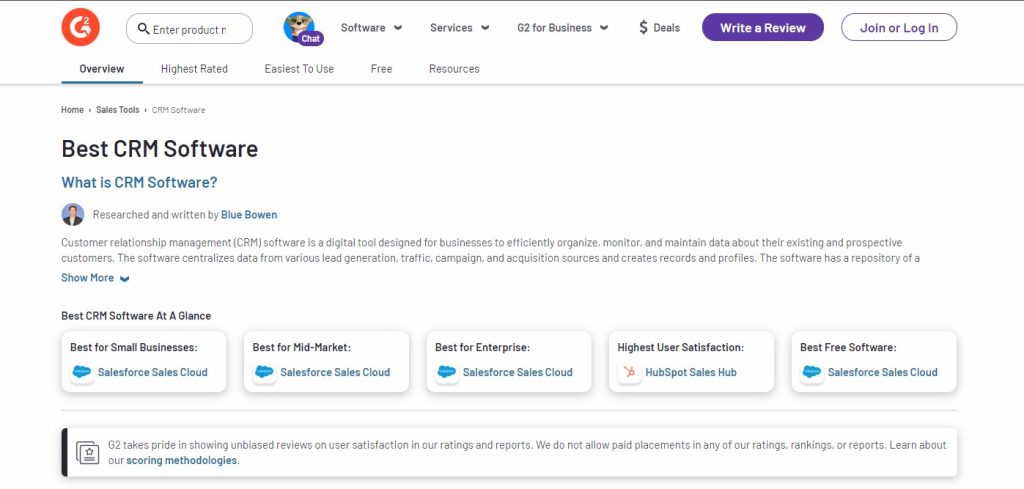Link building can be a game-changer for B2B SaaS companies, but figuring out where to start can feel overwhelming. If you’re struggling to drive organic traffic and improve your SEO, you’re in the right place.
In this article, we’ll break down 10 proven link-building strategies tailored specifically for B2B SaaS, from guest blogging to digital PR campaigns, helping you build the backlinks you need to boost your rankings and authority.
With our expertise in SaaS link building, we’ve helped countless businesses navigate the complexities of SEO and see real results. By the end of this guide, you’ll have the tools and strategies to elevate your backlink profile and solve your SEO challenges once and for all.
Let’s get started!
Table of Contents
Why Link Building is Crucial for B2B SaaS
In the B2B SaaS landscape, link building is a crucial strategy for driving organic traffic. Here’s why link building can offer great advantage to those businesses.
1. Improving Organic Search Rankings
For B2B SaaS companies, organic traffic can be a significant driver of qualified leads. However, achieving top search engine rankings is no easy feat in highly competitive SaaS markets.
Search engines like Google consider backlinks as one of the most important ranking factors. The more high-quality, relevant backlinks your website earns from authoritative sources, the more likely it is to rank higher in search results.
Backlinks act as “votes of confidence” from other websites, signaling to search engines that your content is valuable and trustworthy. By building links from industry-relevant sites, SaaS companies can improve their domain authority, which directly impacts search visibility.
Higher rankings mean more visibility to potential customers who are searching for solutions you offer, driving steady, organic traffic to your site.
2. Long Sales Cycles & High Competition

B2B SaaS companies often face longer and more complex sales cycles compared to B2C businesses. Customers in the B2B space typically invest a significant amount of time researching potential solutions before making a purchasing decision.
In this context, link building plays a crucial role in nurturing leads and keeping your brand top-of-mind throughout this extended decision-making process.
By earning backlinks from trusted industry publications, thought leadership blogs, and authoritative websites, your SaaS brand becomes more visible during the research phase of the buyer’s journey. Link building helps position your company as a reliable, established player in the market, making it easier for potential clients to trust your product or service.
Moreover, the SaaS industry is incredibly competitive. Competitors are often vying for the same keywords and target audiences. Building quality backlinks helps differentiate your brand, boosting your website’s ranking and giving you an edge over your competition in search engine results pages (SERPs).
3. Building Authority in Niche Industries
B2B SaaS companies often operate in highly specialized, niche markets. Link building not only improves SEO but also helps establish your brand as an authority within your industry.
When your SaaS company is mentioned or linked to by respected sources, it increases your credibility and positions you as a thought leader.Securing backlinks from industry-specific websites, influencers, and publications signals to your audience that your product or service is respected by others in your space.
This validation is critical for SaaS companies targeting niche markets, as prospective customers are more likely to choose a solution they see as credible and established.
10 Proven B2B SaaS Link Building Strategies

Building high-quality backlinks is essential for improving search engine rankings, increasing organic traffic, and establishing your brand’s authority in the competitive B2B SaaS landscape.
However, not all link-building strategies are created equal. To help you get the most out of your efforts, we’ve compiled 10 proven link-building strategies that are specifically tailored for B2B SaaS companies.
These tactics will help you earn relevant, authoritative links, drive qualified traffic, and ultimately, boost your online visibility and growth. Let’s dive in!
1. Resource Pages
One of the most effective and straightforward link-building strategies for B2B SaaS companies is securing backlinks from resource pages.
Resource pages are curated lists of valuable tools, content, and services that websites recommend to their audience. These pages are often focused on a specific niche or industry and are designed to provide helpful information or solutions to visitors.
Resource pages often carry a high level of authority because they’re typically created by trusted websites, blogs, or industry influencers. By getting your SaaS product or content listed on these pages, you can not only earn a high-quality backlink but also reach a targeted audience that is actively seeking solutions like yours.

Here’s how you can build links from resource pages:
Step 1. Identify Relevant Resource Pages
Use search queries like “best [your SaaS category] tools,” “top [industry] resources,” or “[industry] resource page” to find relevant resource pages. Tools like Ahrefs or Google search operators can help you discover these pages faster.
Step 2. Create a Linkable Asset
Ensure you have a high-quality asset, such as a blog post, tool, or comprehensive guide that provides real value to the resource page’s audience. The better your content or product solves a problem or fills a gap, the more likely it is to be included.
Step 3. Outreach and Pitch
Contact the site owner or editor of the resource page. Be polite and explain how your SaaS solution or content fits with their audience. Make it easy for them by providing a brief description of your product or resource and how it can benefit their readers.
Step 4. Monitor and Follow Up
Keep track of your outreach efforts and follow up politely if you don’t receive a response. Building relationships with site owners can increase the chances of future collaborations.
2. Directories

Listing your B2B SaaS product in directories is another powerful link-building strategy that can enhance your online presence. Directories are websites that compile lists of software, tools, and services within specific categories, allowing users to find solutions that meet their business needs.
Directories provide B2B SaaS companies with backlinks from established, relevant platforms that specialize in showcasing products and services to potential buyers.
These directories often have high domain authority and attract traffic from businesses actively searching for software solutions, meaning that a presence here can not only boost your SEO but also help you reach more qualified leads.
There are two main types of directories:
- Industry-Specific Directories: These focus on particular niches or industries. For example, there are directories for HR tools, marketing automation, customer service software, and more. Being listed in a relevant niche directory ensures you are visible to potential customers within your target market.
- General SaaS Review Directories: Platforms like G2, Capterra, and Software Advice are popular among businesses looking for SaaS products. These directories allow users to leave reviews, making them trusted sources for buyers researching software solutions.
By getting listed in the right directories, your SaaS product can gain both visibility and trust, contributing to sustained growth and SEO success.
3. Unlinked Mentions

One of the easiest and often overlooked link-building strategies for B2B SaaS companies is capitalizing on unlinked brand mentions. These are instances where your SaaS company, product, or content has been mentioned across the web without a corresponding backlink.
Turning these mentions into valuable backlinks is a low-hanging fruit that can quickly boost your domain authority and SEO without the need to create new content or build relationships from scratch.
Here’s how you can find and turn unlinked mentions into backlinks:
Step 1. Find Unlinked Mentions
The first step is to identify where your brand is being mentioned without a backlink. Tools like Ahrefs, SEMrush, or Google Alerts can help you track mentions of your SaaS brand across the web. These tools allow you to set up alerts or search for mentions of your company name, product name, or related terms.
Step 2. Verify the Mention
Once you’ve identified a mention, check if it includes a backlink to your website. If there’s no link, the next step is to contact the website owner or content creator to request that they add one.
Step 3. Outreach for a Link Request
Reach out to the site owner, editor, or author who published the content. Be polite, appreciative, and straightforward. Let them know that you noticed they mentioned your brand and kindly request that they add a link to your website for their readers’ convenience. Highlight how linking to your site can provide more information or context for their audience.
Example Outreach Email:
Hi [Name],
I came across your recent article, “[Article Title],” and noticed that you mentioned [Your Company/Brand]—thank you for the shout-out! I just wanted to kindly ask if you could consider adding a link to our website so that your readers can easily access more information about [specific product/service].
Here’s the URL: [Insert URL]
I appreciate your time, and thanks again for featuring us in your content!
Best,
[Your Name]
Step 4. Track the Outcome
Keep track of your outreach efforts using a simple spreadsheet. Follow up if you don’t receive a response after a week or two, but always remain polite and non-persistent. As these mentions are already discussing your brand, success rates for these requests tend to be higher.
4. Guest Blogging

Guest blogging is a tried-and-true link-building strategy that involves writing and publishing articles on other websites within your niche or industry.
For B2B SaaS companies, guest blogging offers a powerful way to not only build high-quality backlinks but also expand your brand’s reach, establish authority, and engage with new audiences.
When done correctly, it provides benefits beyond SEO, such as enhancing brand visibility, driving referral traffic, and building relationships with influential figures in your niche. Moreover, guest blogging on websites that your target audience already trusts can help establish your SaaS product as a credible and reliable solution for their business needs.
Follow these steps to implement a successful guest blogging campaign for your B2B SaaS company:
Step 1. Identify Relevant Blogs
Start by identifying high-authority blogs or websites in your industry where your target audience is likely to engage. Focus on websites that publish content related to your SaaS solution and have a strong readership.
You can find these opportunities using tools like Ahrefs, SEMrush, or simply by searching for terms like “[industry] guest blogging sites” or “[industry] write for us.”
Step 2. Evaluate Quality and Authority
Not all websites are created equal. Prioritize sites that have:
– High domain authority
– A sizable and engaged audience
– Strong social media presence
– Consistent publishing schedules
This ensures that any backlinks you acquire are from reputable sources, boosting your SEO and visibility.
Step 3. Pitch High-Value Topics
Once you’ve identified potential websites, pitch topics that are relevant to their audience and align with your expertise. Make sure the topics are not only educational and valuable but also subtly related to your SaaS offering.
For example, if your SaaS solution is a project management tool, you could pitch a guest post titled “5 Ways to Streamline Project Collaboration in Remote Teams.”
Step 4. Create High-Quality, Linkable Content
Write guest posts that are informative, engaging, and provide actionable insights for the audience. Within your post, include a backlink to a relevant, valuable resource on your website, such as a blog post, case study, or product page. Be careful not to overdo the self-promotion—focus on providing value first and foremost.
Step 5. Promote Your Guest Post
Once your post is live, promote it across your social media channels, email lists, and website to maximize its reach. This not only drives traffic to your guest post but also showcases your industry authority to your own audience.
Step 6. Build Relationships
Guest blogging is about more than just backlinks. Use this opportunity to build long-term relationships with blog editors, influencers, and industry leaders. Strong relationships can lead to future guest posts, collaborations, and even partnerships.
5. Creating Linkable Assets

A linkable asset is any piece of content that is so valuable, informative, or unique that other websites naturally want to link to it. These assets can take many forms, such as data-driven reports, infographics, whitepapers, or industry guides.
By offering valuable resources, you can attract organic backlinks from authoritative websites, bloggers, and influencers, boosting your SEO and domain authority.
For B2B SaaS companies, content is a key driver of brand awareness, thought leadership, and lead generation. Linkable assets provide immense value to your target audience and the broader industry, leading to natural backlinks without the need for aggressive outreach.
Additionally, linkable assets are often evergreen, meaning they can continue to attract backlinks and traffic over time, providing long-term SEO benefits.
Here are some of the most effective types of linkable assets that B2B SaaS companies can create to attract backlinks:
Data-Driven Reports and Case Studies
Original research, surveys, or case studies backed by data are some of the most powerful linkable assets.
For example, if your SaaS company specializes in marketing automation, conducting a survey on email marketing trends and publishing a report can attract links from industry blogs, news outlets, and other companies looking to reference credible data.
Whitepapers and Ebooks
Offering in-depth, downloadable resources that provide valuable insights or solve specific pain points for your audience can naturally earn backlinks. These long-form content pieces are especially useful in B2B SaaS, where buyers are often researching solutions in great detail.
Infographics and Visual Content
Infographics are highly shareable and can quickly go viral. By visualizing complex data or processes, you make your content more digestible and appealing to a broader audience.
Other websites may link to your infographic when they’re looking for visual content to complement their articles.
Tools and Templates
Providing free tools or downloadable templates is another excellent way to attract backlinks. For example, if your SaaS product focuses on productivity, offering a free project management template or ROI calculator can drive both traffic and backlinks.
6. Partnerships

Forming strategic partnerships is a highly effective link-building strategy for B2B SaaS companies. With the right approach, partnerships can become an ongoing source of authority, visibility, and trust for your SaaS brand.
In the SaaS space, partnerships can be particularly powerful because they allow you to tap into new audiences, leverage the authority of trusted industry players, and build long-lasting relationships that drive both SEO and business growth.
For B2B SaaS companies, partnerships offer more than just backlinks—they can drive brand awareness, co-marketing opportunities, and customer acquisition.
By working with complementary SaaS providers, industry influencers, or even non-competing businesses, you can create content or solutions that benefit both parties while earning authoritative backlinks from credible sources.
Partnerships also help amplify your reach to new, highly relevant audiences. When your partner promotes your joint content, you gain exposure to their customer base, leading to more traffic, leads, and potential backlinks from third-party sites.
7. Broken Link Building

Broken link building is a highly effective and scalable link-building strategy for B2B SaaS companies that involves finding broken (dead) links on other websites and suggesting your content as a replacement.
This tactic not only helps website owners fix outdated or broken links, but it also provides an opportunity for your SaaS company to earn high-quality backlinks from relevant sources. Broken link building is a win-win: it improves the user experience on the host site and boosts your SEO by acquiring valuable backlinks.
Here are some of the best practices for broken link building:
- Focus on Relevance: Ensure that your content is highly relevant to the broken link you’re aiming to replace. This increases the likelihood that the webmaster will find it useful and relevant to their audience.
- Be Helpful, Not Pushy: Your outreach should focus on helping the website owner fix a problem. Avoid being too self-promotional—your goal is to provide value by pointing out broken links and suggesting a helpful replacement.
- Stay Organized: As you scale your broken link-building efforts, staying organized is key. Use a spreadsheet to track your outreach, follow-ups, and successes.
8. Podcasts

Podcasts are becoming an increasingly popular medium for B2B SaaS companies to build backlinks, grow their brand, and establish thought leadership. Participating in podcasts—either by being a guest on industry-relevant shows or hosting your own—can generate high-quality backlinks from podcast show notes, websites, and social media promotion.
Podcasts offer several unique advantages for B2B SaaS link building. They not only provide a platform to showcase your expertise and build brand awareness but also often include backlinks in the show notes or on the podcast’s website.
These backlinks typically point to your website, blog, or landing page, driving referral traffic while contributing to your SEO efforts. Podcasts also allow you to engage with a highly targeted audience that aligns with your industry, increasing the likelihood of attracting qualified leads.
Furthermore, podcast content is evergreen and can be repurposed for additional content such as blog posts, social media snippets, or even guest articles, expanding your reach and creating further opportunities for backlinks.
9. Leveraging Customer Success Stories
Leveraging customer success stories is an excellent link-building strategy for B2B SaaS companies. By showcasing how your SaaS solution has helped customers achieve their goals, you can create compelling, trust-building content that other websites are likely to reference.
These success stories not only generate high-quality backlinks but also serve as powerful social proof, highlighting the tangible value of your product.
For B2B SaaS companies, success stories are particularly effective because SaaS products often involve complex solutions with a longer buying cycle. Prospective customers want to see real-world examples of how your product works before making a purchase decision.
By promoting these success stories, you not only generate backlinks but also nurture trust with potential buyers.

Here’s how you can effectively create and use customer success stories to build backlinks:
Step 1. Identify Successful Customers
Start by identifying your most successful or satisfied customers who have seen measurable results from using your SaaS product. These customers should represent different industries or use cases, allowing you to create a diverse set of stories that appeal to a broader audience.
Step 2. Create Compelling Case Studies
Once you’ve selected the right customers, create detailed, high-quality case studies that highlight the challenges they faced, how your SaaS solution helped solve them, and the results they achieved.
Include specific metrics, such as revenue growth, cost savings, or time efficiency, to make the case study more impactful. This level of detail not only makes the content more compelling but also encourages other websites to link back to it.
Step 3. Encourage Customer Promotion
After publishing the case study on your own website, encourage the customer to share it on their site, blog, or social media channels. Many customers are happy to highlight their success, and this can lead to backlinks from their websites or partner sites. In some cases, industry publications might also cover the story, generating further links.
Step 4. Promote the Case Study Externally
Reach out to industry-specific blogs, SaaS review sites, and media outlets that focus on your target market. Many of these websites are always looking for real-life examples of successful software implementations to share with their audiences. By offering them a well-crafted success story, you increase your chances of earning backlinks.
Step 5. Feature Success Stories in Guest Posts
When writing guest posts for other websites, include references to your customer success stories. This helps reinforce your authority on the topic and can lead to additional backlinks. For example, when discussing the benefits of marketing automation in a guest post, you can mention how your SaaS tool helped one of your customers increase their conversion rates.
Step 6. Highlight Stories in Webinars or Presentations
Customer success stories can also be used in webinars, conference presentations, or industry panels. These events often have dedicated pages where speakers and materials are linked, providing another opportunity to earn backlinks to your success stories.
10. Digital PR Campaigns

Digital PR campaigns are a powerful and strategic way for B2B SaaS companies to earn high-quality backlinks while significantly increasing brand visibility and authority. Unlike traditional PR, digital PR focuses on online platforms, leveraging news, stories, and content that are designed to attract coverage, backlinks, and social media engagement.
By developing newsworthy content and pitching your stories effectively, you can secure media coverage that results in valuable backlinks and enhances your SEO. Digital PR not only amplifies your link-building efforts but also establishes your SaaS brand as a trusted leader in the industry.
Through these campaigns, you can build relationships with journalists, bloggers, and influencers, generating buzz around your SaaS product and driving traffic from authoritative sources.
For B2B SaaS companies, which often have complex solutions, digital PR can help translate technical or niche products into engaging stories that resonate with a wider audience. This makes your product more accessible and helps potential customers see the value you provide.
Measuring the Success of Your Link Building Campaigns
Successfully building high-quality backlinks is only part of the equation. To ensure that your link-building efforts are effective and delivering value to your B2B SaaS business, it’s important to measure the right metrics and track the impact on your overall SEO performance.

Here’s how you can assess the success of your link-building campaigns.
1. Key Metrics to Track
Monitoring the right metrics will help you gauge the performance of your link-building efforts. Here are the key indicators you should track:
- Number of Backlinks Acquired: This is the most basic metric, tracking the total number of backlinks your site has gained over time. However, not all backlinks are created equal. Focus on the quality of these links, particularly those from high-authority, relevant sites.
- Domain Authority (DA): Domain authority is a metric developed by tools like Moz to predict how well a website will rank in search engines. A successful link-building campaign should result in an increase in your DA over time as you acquire more authoritative backlinks.
- Referring Domains: The number of unique domains linking to your site is a critical factor. Multiple links from diverse, reputable websites are more valuable than many links from a single domain.
- Anchor Text Distribution: Monitoring the anchor text of your backlinks can help you ensure it is optimized for your target keywords while maintaining natural diversity. Over-optimization can hurt your rankings, so it’s crucial to have a balanced anchor text profile.
2. Analyzing the Impact on SEO
To understand how your link-building efforts are impacting your SEO performance, look at the following:
- Keyword Rankings: One of the primary benefits of building backlinks is improved keyword rankings. Monitor your target keywords to see if your rankings have increased after acquiring new backlinks.
- Organic Traffic Growth: A successful link-building campaign should correlate with an increase in organic traffic. Use tools like Google Analytics or Ahrefs to measure traffic trends. If you’re targeting the right keywords with your backlinks, you should see a steady rise in organic search traffic over time.
3. Tracking ROI for B2B SaaS Companies
Understanding the return on investment (ROI) for your link-building efforts is essential, especially in the B2B SaaS industry where the sales cycle can be long and complex. Here’s how you can measure ROI:
- Lead Generation from Organic Traffic: Since the ultimate goal of SEO is to generate qualified leads, track how many leads come from organic traffic. Use your analytics tools to monitor conversions and set up tracking for specific actions like demo requests, trial sign-ups, or contact form submissions that originate from organic visitors.
- Customer Acquisition Cost (CAC): Track how link building contributes to lowering your CAC. If your organic traffic leads to conversions and customer acquisitions, your reliance on paid advertising may decrease, resulting in a lower overall CAC.
- Lifetime Value (LTV) of Organic Customers: Compare the lifetime value of customers who are acquired through organic traffic with those from other channels. Organic traffic can often yield higher-quality, long-term customers because they’ve done extensive research before purchasing.
- Revenue Growth Attributed to Organic Traffic: Ultimately, you want to tie your link-building success to revenue. By tracking the sales and revenue generated by leads from organic search traffic, you can assess the financial impact of your campaigns.
Final thoughts
Building a strong backlink profile is crucial for the success of any B2B SaaS company, and by following the strategies we’ve outlined, you’re well on your way to improving your SEO, boosting organic traffic, and establishing authority in your industry.
You’ve come to this guide looking for proven ways to elevate your link-building game, and we’ve provided actionable insights to help you get started.
We understand that navigating the complexities of SaaS link building can be overwhelming—whether it’s finding the right partnerships, creating linkable assets, or launching digital PR campaigns.
These strategies can be time-consuming and require a focused approach, especially when competing in a crowded market. That’s where we come in.
Our specialized link-building services are designed specifically for B2B SaaS companies like yours, helping you secure high-quality backlinks that drive real results. Let us handle the heavy lifting so you can focus on what you do best—growing your business.
Get in touch with us today to learn how we can help you build a robust link-building strategy tailored to your SaaS company’s needs.

Andrej Fedek is the creator and the one-person owner of two blogs: InterCool Studio and CareersMomentum. As an experienced marketer, he is driven by turning leads into customers with White Hat SEO techniques. Besides being a boss, he is a real team player with a great sense of equality.
